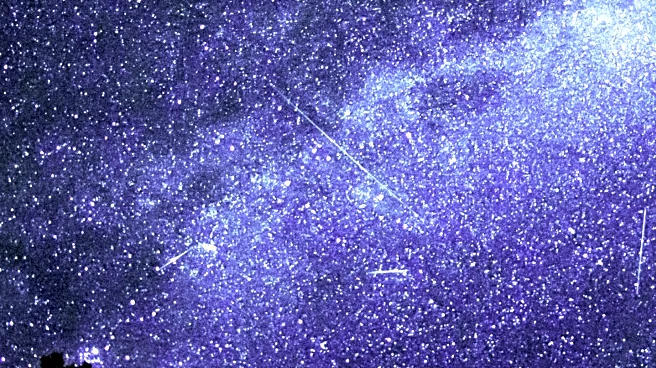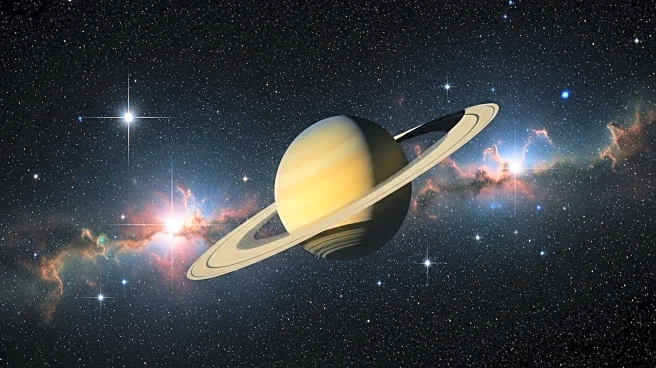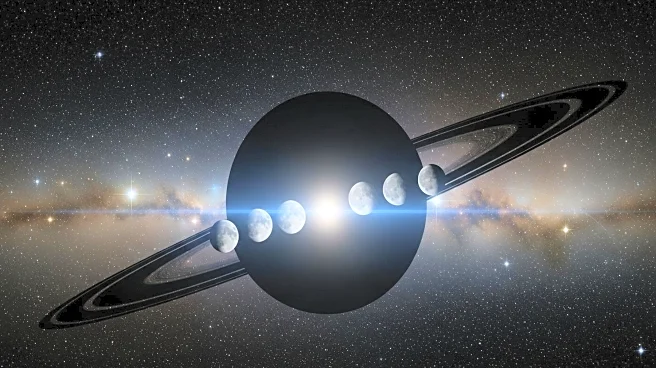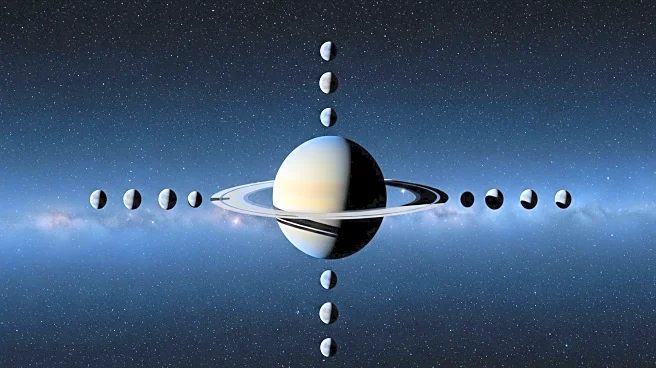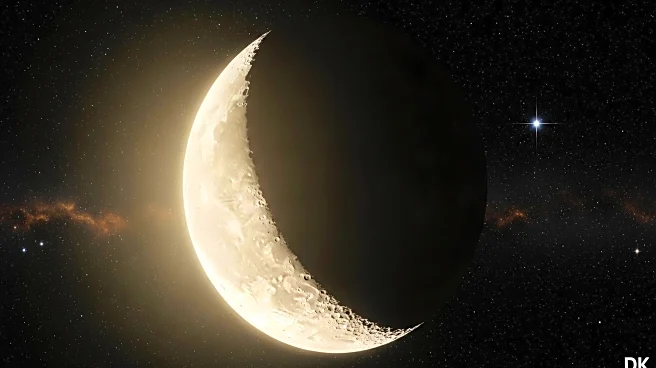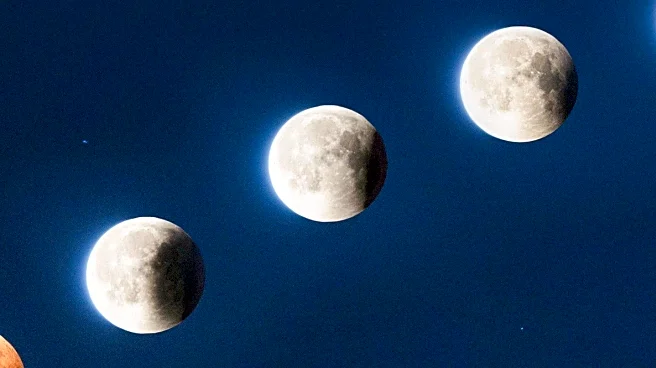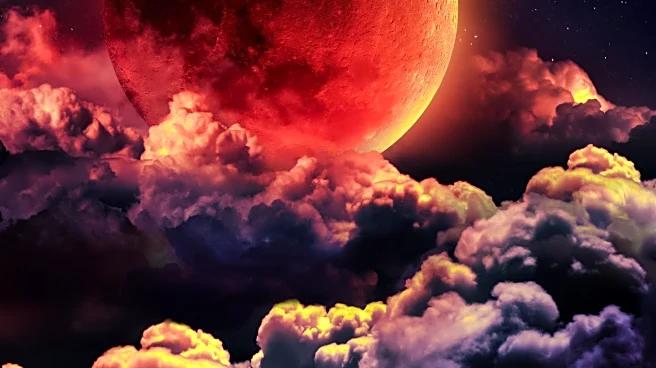What's Happening?
Central Wisconsin is set to experience a week of remarkable astronomical events, including the appearance of Saturn, Venus, and Uranus, along with the Perseid meteor shower. Saturn will be visible with its moons, including Iapetus, which will be at its greatest western elongation. Venus will rise early, appearing near the Beehive Cluster, while the waxing crescent moon will pass by Antares in the evening sky. Additionally, Delta Cephei, a variable star in Cepheus, will be visible, offering a chance to observe its brightness cycle. Mercury will pair with Regulus before dawn, and the Great Square of Pegasus will rise in the east after sunset. These events provide opportunities for stargazers to observe planetary alignments and celestial phenomena.
Why It's Important?
These astronomical events offer a unique opportunity for stargazers and astronomers to observe and study celestial bodies and phenomena. The visibility of Saturn's moons, Venus near the Beehive Cluster, and the Perseid meteor shower can enhance public interest in astronomy and science education. Observing variable stars like Delta Cephei can contribute to understanding stellar behavior and the universe's expansion. Such events can also boost local tourism and community engagement in science-related activities, fostering a greater appreciation for the natural world and the cosmos.
What's Next?
As the week progresses, stargazers can anticipate further celestial events, including Titan's shadow transit on Saturn and Uranus's proximity to the Pleiades star cluster. These occurrences will continue to provide opportunities for observation and study. Local astronomy clubs and enthusiasts may organize viewing events or educational sessions to maximize public engagement. The visibility of these celestial bodies may also inspire future astronomical research and exploration.
Beyond the Headlines
The visibility of these celestial events highlights the importance of preserving dark skies and reducing light pollution to ensure optimal conditions for astronomical observation. It also underscores the role of astronomy in cultural and scientific heritage, encouraging communities to value and protect their natural environments. Long-term, these events may inspire technological advancements in telescopic equipment and observational techniques.
